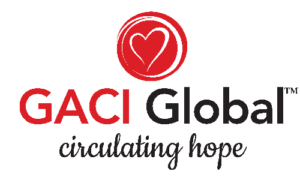Rare Community Profiles

Rare Community Profiles is a new Patient Worthy article series of long-form interviews featuring various stakeholders in the rare disease community, such as patients, their families, advocates, scientists, and more.
Rare Community Profiles: Inozyme’s Catherine Nester Discusses Newborn Screening and the GACI Diagnostic Delay
September is Newborn Screening Awareness Month. During this month, people and organizations across the globe come together to raise awareness on newborn screening and educate the general population on the positives that newborn screening can bring to families. Newborn screening is a public health initiative. Infants are tested shortly after birth, via a small blood test, for a variety of rare and serious genetic, hormonal, or metabolic conditions. If a child is diagnosed, it allows for early treatment—and, hopefully, better outcomes.
While newborn screening has conferred immense benefits in many ways, it also has shortcomings. Each state is meant to screen for conditions on the Recommended Uniform Screening Panel (RUSP); however, implementation in certain states or areas may not include all approved diseases, and may take months or even years. As Catherine Nester, BSN, Senior Vice President, HCP and Patient Engagement, of Inozyme Pharma, explains:
“Traditional newborn screening is an amazing health initiative. But there remains a lot of inconsistency on which diseases each state accepts for their newborn screening program. We need to work to ensure that these screening programs become more standardized.”
Recently, Catherine spoke with Patient Worthy about the importance of newborn screening, the challenges of diagnostic delays, and how Inozyme is working to transform the treatment landscape for ENPP1 Deficiency and ABCC6 Deficiency, also known as Generalized Arterial Calcification of Infancy (GACI) types 1 and 2, respectively.
Developing a Pharma-Advocacy Partnership in the Rare Disease Space
In 2018, Inozyme began working with GACI Global, a nonprofit organization (and Patient Worthy partner!) whose mission is to connect and support families affected by ENPP1 Deficiency and ABCC6 Deficiency, also known as GACI types 1 and 2. GACI Global hopes to not only provide valuable support and care to families, but to advance research and understanding in this realm. Says Catherine:
“GACI Global came together as an organization in 2018, so we have truly been partners from thevery early days. Partnering with GACI Global made sense to us for many reasons. They help us to understand the disease more and what is important to the patient community. We have partnered on research projects together that have been published in a few different papers, and they have also been incredibly helpful in adding the patient perspective as we develop clinical trial protocols. I really could not imagine doing what we’re doing at Inozyme without the support of the GACI Global community.”
The partnership developed from Inozyme’s mission to develop treatments for rare mineralization disorders with no approved therapies. Working in the rare disease space can sometimes be difficult, Catherine explains:
“We don’t have the large patient populations to enroll in clinical trials that we would for a more common disease. This means that it takes more time and effort to identify patients, connect with them, and work hand-in-hand through the drug development process. But what makes this process challenging is also rewarding. These families are incredibly motivated to participate, to enroll in clinical studies, and to be a really wonderful partner to companies like ours.”
About Generalized Arterial Calcification of Infancy (GACI)
Also known as: Idiopathic Infantile Arterial Calcification, (IIAC), Idiopathic Arterial Calcification of Infancy, (IACI), Occlusive Infantile Arterial Calcification, Occlusive Infantile Arteriopathy
First described in 1899, GACI is a rare genetic disorder that primarily affects the circulatory system early in a patient’s life. In GACI, ABCC6 or ENPP1 mutations cause the blood to have low or no inorganic pyrophosphate. This causes issues with calcium regulation, causing calcium to accumulate in blood vessels and artery walls. The prevalence of ENPP1 Deficiency from mutations in the ENPP1 gene is 1:64,000 pregnancies.
GACI is a variable condition, so symptoms may differ from person-to-person: even within the same family. Potential symptoms may include:
- Failure to thrive
- Cardiomyopathy
- Reduced or absent pulses
- Difficulty breathing
- High blood pressure
- Feeding difficulties
- Irritability
- Heart failure
- Fluid accumulation
- Narrowed arteries
- Vascular disease
- Joint calcifications
- Reduced blood flow
- Hearing loss
- Dental abnormalities
Right now, there are no approved therapies for GACI, although certain medications or procedures may help to combat calcium accumulation. Treatment requires a multidisciplinary team.
The Difficulties of Identifying a Rare Disease
As many people in the rare disease community know, the diagnostic process can be long and arduous—there’s a reason it’s often referred to as an odyssey! However, with GACI, early diagnosis is often incredibly crucial. GACI has a high level of early mortality within the first six months of life; it is fatal for an estimated 50% of infants born with this condition. Says Catherine:
“Dr. Stephen Kingsmore of Rady Children’s Institute for Genomic Medicine is currently working with his team to develop a rapid whole genome sequencing (rWGS) panel for newborn screening that could accurately identify hundreds more rare diseases in newborns. I often think about how a program like this could be immensely helpful for the GACI community, especially as it pertains to survival. Some physicians are very astute and recognize it in utero, but some infants spend time in the NICU without a diagnosis, which can be challenging from a time perspective. If doctors are in a fetal setting, I want them to have a sense of urgency because these infants need help, and they need it fast.”
Without effective newborn screening measures and early diagnosis, infants can also miss out on helpful clinical studies. Currently, Inozyme is developing INZ-701, its lead candidate, as a potential therapeutic option for GACI. INZ-701 is an enzyme replacement therapy designed to increase plasma pyrophosphate (PPi) and adenosine. PPi is an essential enzyme for regulating mineralization and calcification and is often significantly lower in patients with GACI when compared to the general population.
Inozyme is conducting an infant study in the United States to evaluate INZ-701: one site is at Children’s Hospital of Philadelphia (CHOP) and the other at Boston Children’s. The current challenge that the team is facing is having doctors recognize and diagnose the disease fast enough for enrollment. Catherine shares:
“Unfortunately, some babies have passed away so quickly that we haven’t been able to enroll them and see if they would benefit from this medicine. Right now, we don’t know when the drug is most effective or if it must be given in a certain time period; that’s what the trial will answer. But we do know that, since early mortality is such a challenge, we want to give these babies the best possible chance through early treatment.”
The Need for Physician Education
While GACI mortality is highest in the first six months of life, some individuals with GACI live into their adolescence and adulthood. Some children may not show symptoms and be diagnosed until 3-6 years old; others, despite symptoms, may not be diagnosed until later in life. Catherine shares:
“There are some people in the GACI community who weren’t diagnosed until their 30s or 40s. When they looked back, the clues were there. They just weren’t in front of a clinician that could put the pieces of the puzzle together. That is why improved newborn screening measures, and better physician education, could offer significant help.”
Outside of advocating for improved newborn screening measures—Catherine also co-chairs the arm of the whole genome sequencing work that is representing patients and families; her goal is to ensure that the patient and family voice is heard throughout the process—Catherine and the Inozyme team also push towards medical education for physicians. She explains:
“We have heard stories from rare disease groups and families about how they sat through doctor after doctor after doctor. Doctors are responsible for so much and it’s hard to be an expert in everything. But when symptoms are not being identified, or a disease is misidentified, patients suffer because they do not get the right treatment—or even any treatment. By providing physician education, we hope to overcome this and move towards a world where every person can get appropriate care.”
To achieve this goal, Inozyme attends conferences with physicians from neonatology, cardiology, and endocrinology (among others); the company has a booth with educational materials and often tries to find an expert who can speak to the audience. The company partners with experts to publish information and research on GACI. Says Catherine:
“We spend the bulk of my team’s time helping to raise disease awareness. Most physicians are really happy to have it and to learn something new. Our goal is to just get across what ENPP1 Deficiency and ABCC6 Deficiency look like, the prevalence, the rarity: a clear picture of what the patient presentation looks like, and what symptoms might be relayed to the doctor, so that when physicians see a patient with phenotypic findings, they can get the diagnosis correct.”
Looking to the Future
As Catherine looks to the future, she feels hope: for newborn screening, for the GACI community, and for the rare disease community as a whole. Whole genome sequencing for newborns represents a forward-thinking, aspirational, and innovative vision that she believes might be:
“One of those things that, looking back, we realize how deeply it changed healthcare.”
Of course, there are still many things to figure out on this journey: data protection, how to handle faster diagnosis, translating information to clinicians.
But through this process, innumerable families and children will find comfort, support, and knowledge in the diagnostic process.
Until that point, Catherine says, she will continue advocating. Inozyme will continue looking to the future and finding new ways to benefit the patient community. Catherine says:
“We truly appreciate the GACI community so much. We are with you as we move this program forward and through every step in between.”







